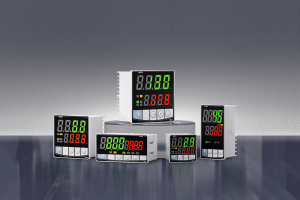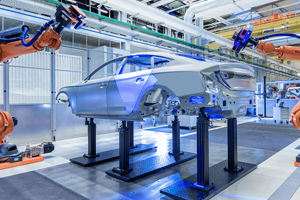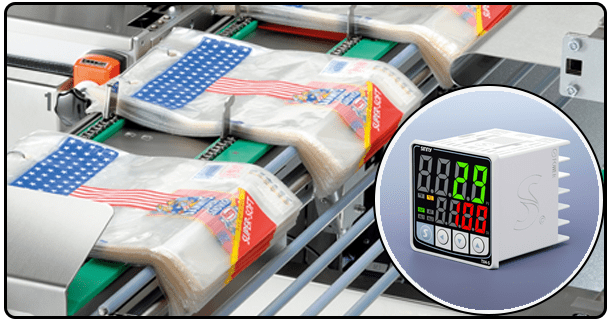How Temperature Controllers Work: A Comprehensive Guide
Temperature control is an integral component of many industrial and commercial processes, from manufacturing to food processing, where precise temperatures ensure quality, efficiency, and safety. Temperature controllers are essential devices used to set desired temperatures within systems; here is an in-depth guide that offers expert insights from reliable sources on their operation.
1. What Is a Temperature Controller?
Intelligent temperature controller is an electronic device used to maintain ideal environments by controlling heating or cooling mechanisms within systems. Various kinds of controllers exist such as on/off, proportional, PID regulators with various levels of precision and control capabilities.
Types of Temperature Controllers
On/Off Controllers: For simplicity's sake, an on/off controller offers the easiest form of temperature regulation by switching heating or cooling devices on and off as necessary to achieve and maintain desired temperatures settings.
Proportional controllers: offer more precise temperature regulation by adapting output power proportionally to any differences between set point temperature and current temperature.
PID Controllers: PID controllers combine proportional, integral and derivative control actions for accurate temperature regulation. By maintaining stable temperatures over time with these precise measures of regulation they create highly precise temperature management that remains accurate over time.
Applications
Temperature controllers have become an integral component of many industries including pharmaceuticals, food & beverage production, electronics and healthcare that rely heavily on maintaining specific temperatures to maintain quality products while meeting safety regulations.
2. Basic Components of a Temperature Controller
Sensor (Instruments for Measuring Temperature in Systems)
A sensor measures the actual temperature in a system. Common types include thermocouples and Resistance Temperature Detectors (RTDs). Accurate readings provided by these devices ensure proper operation of controller.
Controller
The controller receives the temperature signal from the sensor and compares it to the set point. Based on this comparison, it sends a signal to the output device to adjust the heating or cooling.
Output Device
An output device such as a relay or Solid State Relay (SSR), functions to regulate heating or cooling elements to achieve consistent temperatures within their systems. Following instructions from its controller, these relays adjust power accordingly in order to achieve this aim and achieve its goals.
3. How Temperature Controllers Work
On/Off Control
One/off temperature regulation is one of the simplest forms available today; whenever your set point deviates from its target value, its controller triggers heating or cooling devices based on any deviation in temperature from that threshold point - for instance if your home thermostat detects that temperatures have fallen below their preset setpoint threshold point, heating systems automatically turn back on until target temperatures have been met.
Proportional Control
Proportional control adjusts output power based on the difference between set point temperature and current temperature, decreasing oscillations around it while providing more stable control. For instance, proportional control helps industrial ovens remain close to their setpoint while avoiding large fluctuations.
PID Control
PID control is one of the most sophisticated methods available, combining proportional, integral, and derivative actions for precise temperature regulation. Proportional control targets current errors while integral controls account for past deviations to eliminate past errors while derivative controls provide rate-of-change predictions to anticipate future errors based on future rate-of-change predictions. PID controllers offer precise temperature regulation suited for complex processes that demand accuracy to meet performance targets.
4. Types of Temperature Controllers
Mechanical Controllers
Physical temperature controllers employ physical mechanisms like bimetallic strips or liquid-filled bulbs to regulate temperatures. While mechanical controllers provide greater simplicity over electronic ones, their lack of precision hinders precise temperature regulation.
Electronic Controllers
Electronic controllers utilize electronic components to measure, compare, and regulate temperature. Their increased precision and versatility in temperature regulation applications make these controllers ideal.
Digital Controllers
Digital controllers are cutting-edge electronic systems that use digital processing for precise temperature regulation. Many models include customizable settings, alarms and communication abilities - perfect for modern industrial settings.
5. Setting Up a Temperature Controller
Installation
In order to install and setup an effective temperature controller, one needs to attach it securely onto a wall surface, connect its sensors and output devices, configure its power source according to manufacturer instructions, and test for proper setup according to all manufacturer's guidelines. Do not skip this important step!
Calibration
Calibration is key in maintaining accurate temperature readings from temperature controllers by regularly comparing its readings against known standards, then making necessary adjustments based on this comparison process. Frequent calibration helps maintain its accuracy and reliability over time.
Programming
Programming a temperature controller involves setting your desired set point temperature and configuring control parameters; in the case of PID controllers, this also includes optimizing their proportional, integral and derivative settings for optimal performance.
6. Advantages of Using Temperature Controllers
Precision
Our temperature controllers deliver precision when maintaining target temperatures - making them particularly essential in processes such as semiconductor manufacturing where even minor temperature variations can have devastating impacts on product quality.
Efficiency
Temperature controllers optimize process efficiency by controlling heating and cooling elements to increase process efficiencies. For instance, in food processing plants using precise temperature regulation cuts energy use while simultaneously decreasing waste production for increased productivity.
Safety
Temperature controllers enhance safety in chemical processing plants by preventing overheating and equipment failure, essential in order to minimize potentially hazardous reactions that might harm both people and equipment. Controllers ensure temperatures stay within safe limits to protect both employees as well as assets.
7. Common Issues and Troubleshooting
Sensor Failures
Common sensor issues include inaccurate readings and drift. Troubleshooting may require inspecting connection points to ensure proper installation as well as replacing defective sensors if required.
Controller Malfunctions
Controller malfunctions could stem from power supply problems, software errors or component failure. Troubleshooting includes verifying power supplies, resetting controllers and consulting manufacturer documentation for specific error codes.
Issues With Output Devices
Output devices, like relays and SSRs, that malfunction can wreak havoc with temperature regulation. Troubleshooting requires inspecting these output devices closely for signs of wear or damage before replacing as necessary.
8. Industry-Specific Applications
Manufacturing
temperature controllers play an essential part in processes such as plastic molding, metalworking and semiconductor fabrication, by maintaining consistent product quality while decreasing unnecessary operations costs.
Food and Beverage
Temperature Control in Food and Beverage In the food and beverage industries, temperature control plays a vital role in upholding both safety and quality in our foodstuffs. Controllers ensure accurate temperatures during baking, pasteurizing, or refrigeration processes to guarantee food safety.
Healthcare
Temperature controllers play an essential part in healthcare by maintaining precise temperatures when it comes to the storage and distribution of vaccines and pharmaceutical products, helping ensure their efficacy and safety for use.
Conclusion
Temperature controllers play an invaluable role across industries by offering precise, effective, and safe temperature regulation. From manufacturing to healthcare, temperature controllers serve an indispensable purpose in maintaining process stability, improving product quality, lowering energy use costs and cutting operational expenditures. Implementing temperature controllers into your operations could yield numerous significant advantages that make investing worthwhile.
- How to Install and Set Up a Temperature Controller: A Step-by-Step Guide
- Explore the Advanced Features of Modern Temperature Controllers























